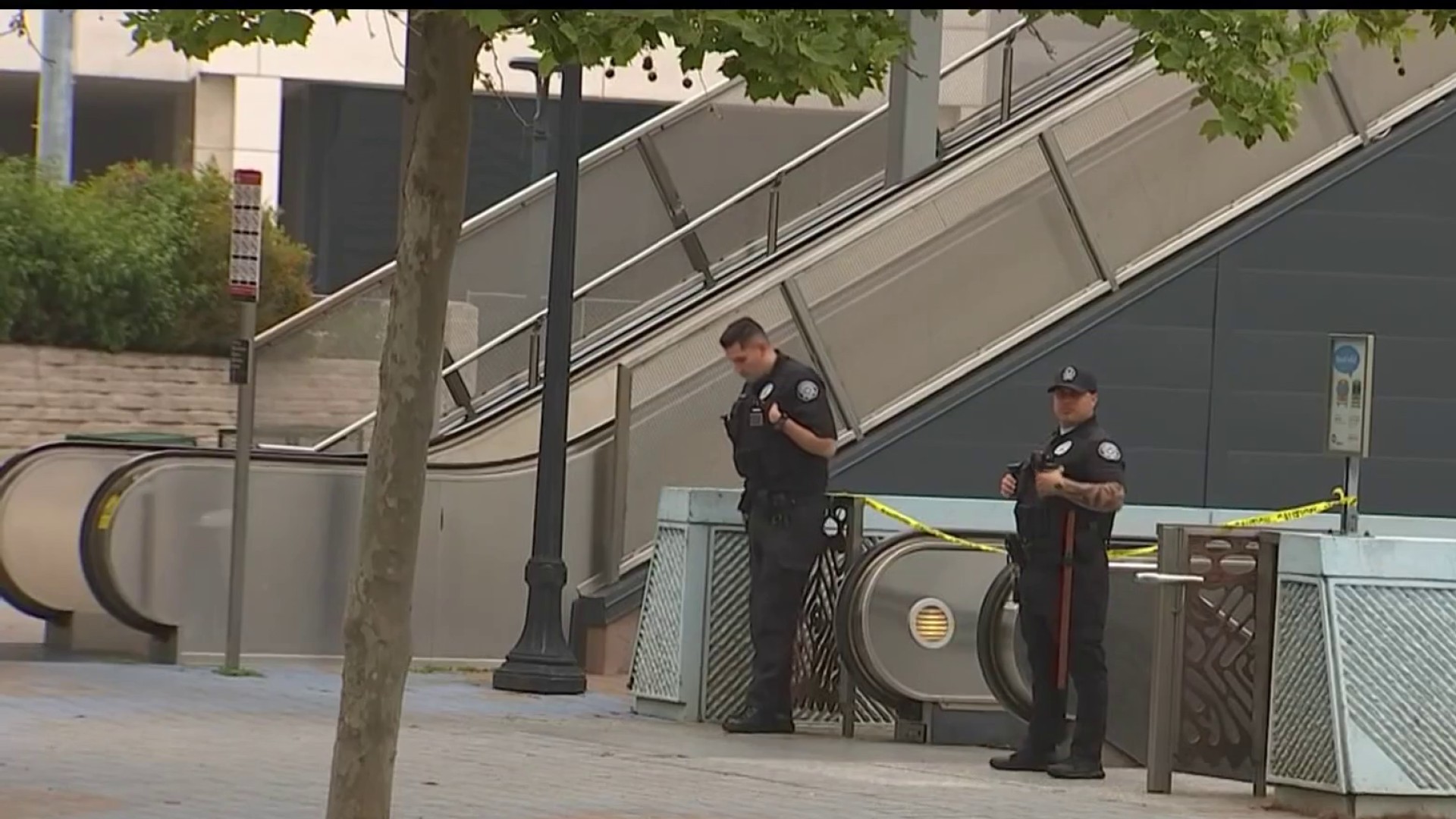An Anaheim police officer used excessive force when he gunned down a 25-year-old man who was running away from him in an apartment building courtyard in 2012, a federal jury determined Thursday.
Jurors hearing the trial of the civil lawsuit brought against the city and the officer will now be asked to determine how much in damages should be awarded to the family of Manuel Angel Diaz. The Orange County District Attorney's Office cleared Officer Nick Bennallack of any criminal wrongdoing in the July 21, 2012, shooting of Diaz.
A day after he was killed, another Anaheim police officer fatally shot 21-year- old Joel Acevedo at the end of a stolen-car pursuit, touching off several days of demonstrations alleging excessive force by police. Some of the protests turned violent. Diaz's mother, Genevieve Huizar, tearfully testified Thursday how much she misses her son. She recounted how she and her daughter drove to the crime scene, and then later headed to UC Irvine Medical Center, where he was later pronounced dead.
Doctors told her that he had been shot in the back of the head "and there was no way to fix him and I would have to make a decision to pull the plug," Huizar testified. Her daughter pleaded with her to order the doctors to "keep working on him," but she concluded, "I didn't want him to suffer any more."
Before the doctors disconnected his breathing tube, she told the doctor, "He's already gone," she testified.
"I try to deal with daily life," since the shooting, she testified. "I go to work, but every day I think of him. Every day I post about him on Facebook... Not a day goes by that I don't think about him."
Huizar had her son cremated so she could keep his ashes close to her, she said.
News
Top news of the day
"I miss his smile, laughter," she testified. "I miss him calling me 'my love,' which is from a song he used to sing... There's no way to express how much I miss my son."
Huizar read aloud an essay her son wrote for his junior high school class about his favorite family member. In it, Diaz wrote about how his mother had to leave his father, who he said was abusive, and care for him and his three sisters.
"She has probably saved my life," Diaz wrote. "She was a single parent for 14 years and worked seven days a week to support me and my sisters... I take her for granted and I need to stop that... I love her with all my heart."
Attorney Steven Rothans, who is representing the city in the trial, questioned Huizar about her son's problems with drugs and his gang tattoos. He also brought out in questioning how Huizar's only visits with her son while he was in and out of prison is when she picked him up on release.
Huizar left her son's father when the boy was a 1-year-old. Diaz spent much of the last year of his life behind bars, and he was transient at the time of the shooting because he didn't want to quit smoking or doing drugs while living with his mother, her husband and Diaz's sister and her children, she acknowledged under cross examination.
Diaz also was not getting along with his sister, who called Santa Ana police on him when he spat in her face, Huizar acknowledged under Rothans' questioning. Diaz was also having problems with his mother's husband because he pushed him to find a job.
Diaz was locked up six times from the time he was 17 until his death, Rothans established under questioning. Rothans also got Huizar to acknowledge that in depositions she could not recall the names of any of her son's friends in high school or afterward. She also acknowledged she had not attended parent-teacher conferences when her son was in school.
Mike Lyster, the city's public information officer, said officials believe Bennallack acted responsibly.
"We acknowledge the jury's decision and thank jurors for their time and consideration," Lyster said. "This case shows the difficulty and complexity of situations our police face, and we believe they acted reasonably. Regardless, any loss of life in Anaheim is tragic, and our hearts go out to the family and all involved. We have not made any determination on next steps as of this moment and await the next phase of the trial."
Attorney Dale Galipo, who is representing Diaz's family, said in his closing argument, "We believe the evidence shows the force was excessive and it wasn't necessary to shoot and kill him."
Galipo said what made the case "unique" was that Bennallack and his partner, Officer Brett Heitmann, were not responding to a specific service call when they spotted Diaz standing outside a car in an alley near 700 North Anna Drive.
"They don't see any specific criminal activity," Galipo said.
Diaz, however, started running when he saw police. The officers shouted to him to stop, but he kept going and went into a courtyard, where he was gunned down before reaching a fence. The entire encounter took about 10 seconds.
Bennallack -- who has been involved in three deadly officer-involved shootings since January 2012 -- testified he was concerned Diaz had a gun because his hands appeared to be near his waistband.
"He's using both hands in a location where a weapon is typically kept," Bennallack said. Also, just before he opened fire, Bennallack noticed Diaz was not "pumping his arms" as if he were trying to get away and was "looking back" as if he were sizing him up, the officer testified.
"He didn't appear to be looking for the path of least resistance to escape me," Bennallack said. "I think he could have easily escaped on foot."
The officer also testified that the suspect appeared to have an object in his hand that he believed may have been a gun. Bennallack said Diaz, with his back to him, was assuming a posture of a "low ready position" to quickly turn and open fire.
Bennallack said his decision to open fire twice was because of an "accumulation of many things."
"I thought he would shoot me and my partner," Bennallack testified.
Galipo noted testimony that Diaz had a glass pipe, a cell phone and a cloth bag with something in it at various times during the seconds-long pursuit.
"How many objects can Mr. Diaz have in his hand? Is he a circus juggler?" Galipo said. And if Diaz were slowing down to confront the officers, how did he manage to keep a 10-foot distance ahead of the officers, Galipo asked.
Galipo also doubted speculation that the black cloth bag contained a gun that someone else took away from the scene. Three teenage girl witnesses testified Diaz was shot twice -- in the back and in the back of his head -- with a pause between shots, Galipo said.
Galipo argued that the officers had to see a gun or fear there was an "imminent threat" of danger to them before opening fire, and that wasn't the case in this instance. The officers also did not warn Diaz they would shoot if he did not stop, Galipo said.
It appeared Diaz could have been surrendering when he was shot, the attorney argued. Rothans said the officers were in a high-crime neighborhood and that Diaz appeared to be clad like a gang member when they officers tried to approach him.
"These were boy scouts hanging out. They were talking about a merit badge," Rothans said sarcastically. "That's what Mr. Galipo would like you to believe."
Huizar lost her first bid to hold the city liable for her son's shooting in a 2014 trial, but the 9th U.S. Circuit Court of Appeals overturned the verdict, ruling that Diaz's gang affiliation was wrongly included in evidence.



